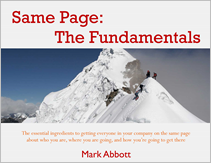
Last week we introduced the notion that getting right people, right seats is one of the most critical components of success in business, and we talked about how to identify the right people. Today, I want to share what I call the “101” version of mastering the right seats part.
(If you missed, last week’s blog, first go here and read it so you have the background on core values and using them to hire, fire, review, and reward.)
Let’s start by defining what a “seat” is.
At its simplest, a seat is a role on something we call an Accountability Chart (“A/C”); a chart which shows who is responsible for what. This includes everything from who oversees sales to who is responsible for replacing the tissue paper before it runs out.
There is a host of reasons, why we use the word “role” instead of “title”, not the least of which is the fact that titles so frequently generate dysfunction due to resentment, frustration, politics, and the like. Because role-based descriptions such as “Head of Sales” simply describe what someone is accountable for, they eliminate 95% of the noise that typically is associated with titles.
So what makes a seat “right”?
Here is where the fun begins! The “right” seats are the collection of seats that an organization needs to get where it wants to be in six to nine months, and to attract and retain talent. That means the seats have to be both right for the organization and right for the talent.
Let’s drill into some of the obvious questions you may be asking:
1. Why 6-9 months instead of today? Or two years out?
There are several reasons why it’s best to keep this kind of mid-range mindset when planning right seats:
- strong senior leadership teams should review and confirm or revise their A/C’s once every quarter during their quarterly meeting,
- it often times takes at least three months just to fill a position,
- great leadership teams create transparent environments and share their A/C’s with their entire organization so everyone knows who is accountable for what and what if any seats are open and/or being temporarily filled, and
- hiring for a position that you know you don’t need for at least a year doesn’t work for either the company (it’s a waste of money) or the employee (it’s a waste of talent).
2. What does “right for the organization” mean?
This simply means there are just the right types (e.g., roles and responsibilities) of seats and the right number of seats to optimize productivity; that the A/C is neither bloated to the point of causing excessive personnel costs, nor so lean that people are stretched to the point of making mistakes or making turnover an issue. It’s kind of like the beds in the Goldilocks fairy tale: neither too big, nor too small, but just right!___
3. What does “right for the individual” mean?
For a job to be right for an individual, he or she must “GWC™” it:
- Get the job; that is, have the skills and experience to perform its roles,
- Want the job, genuinely and for all the right reasons, and
- have the Capacity (mental, physical, and emotional) to do the job well.
Consequently, all you need to do to master right people, right seats is:
- establish your core values,
- create an optimized A/C that enumerates the specific roles for every one of the seats, and
- put people into those seats that possess your core values bar AND absolutely GWC the seat.
In our next post, I am going to introduce you to an optional fourth, and somewhat controversial, component of capacity (i.e., in addition to mental, physical and emotional) and take the notion of mastering the right seats to the next level.
Until then, may you build with passion and confidence.




5 Comments